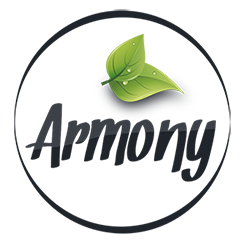
But experience has shown that the most common format organizes information by individual account and assigns each account a code and description. What’s important is to use the same format over time for the consistency of period-to-period and year-to-year comparisons. However, they also must respect the guidelines set out by the Financial Accounting Standards Board (FASB) and generally accepted accounting principles (GAAP).

By separating each account by several numbers, many new accounts can be added between any two while maintaining the logical order. To see our product designed specifically for your country, please visit the United States site. Every executive is committed to ensuring transformational success for every customer. Finance and IT leaders share a common goal of equipping their organizations with ways to work smarter to enable competitive advantage. This intersection between CFO and CIO priorities is driving more unity in terms of strategy and execution.
Chart of Accounts: A Complete Explanation with Examples
For example, if a company divides its business into ten departments (production, marketing, human resources, etc.), each department will likely be accountable for its own expenses (salaries, supplies, phone, etc.). Each department will have its own phone expense account, its own salaries expense, etc. The table below reflects how a COA typically orders these Chart of accounts main account types. It also includes account type definitions along with examples of the types of transactions or subaccounts each may include. Though most accounting software products set you up with a standard COA or let you import your own, it’s a good idea to have an accountant scan it and add any other accounts that are specific to your business.
Why Finance Transformation Starts with Chart of Accounts – Tata Consultancy Services (TCS)
Why Finance Transformation Starts with Chart of Accounts.
Posted: Fri, 04 Aug 2023 07:00:00 GMT [source]
Staying on top of your finances as a small business can be challenging. But it’s an important practice if you want to understand and improve your cash flow. With NetSuite, you go live in a predictable timeframe — smart, stepped implementations begin with sales and span the entire customer lifecycle, so there’s continuity from sales to services to support. This is a further drill down from Account Type and provides a detailed view of the entry across a broader category.
If you keep adding new accounts, then it will become increasingly difficult to compare your financial information over a multi-year period. You should also regularly review the chart of accounts to see if any accounts contain inessential data. If they do, shut down these accounts to keep the chart at a manageable size. For organizational elegance, keep numbers and descriptions consistent.
Chart of Accounts: What Is It and How Does It Work?
Before you start creating a number system and inputting different account types, you need to decide which categories apply to your company. As a small- or medium-size business, you won’t need as many as a large, enterprise business. It’s worth setting up as many as relevant so you don’t have to go back and do it later. In a chart of accounts, your accounts are shown in the same order they appear on your financial statements and are usually broken down into five main categories. One of the main functions of a chart of accounts is to facilitate double-entry accounting, a record-keeping system that documents each business transaction twice. One entry shows the source of money, the other entry shows the money’s destination.
Accounts are usually listed in order of their appearance in the financial statements, starting with the balance sheet and continuing with the income statement. Thus, the chart of accounts begins with cash, proceeds through liabilities and shareholders’ equity, and then continues with accounts for revenues and then expenses. The exact configuration of the chart of accounts will be based on the needs of the individual business. The chart of accounts is a comprehensive list of all the financial accounts used by a company to record and organize its financial transactions.

Understand customer data and performance behaviors to minimize the risk of bad debt and the impact of late payments. Monitor changes in real time to identify and analyze customer risk signals. She would then make an adjusting entry to move all of the plaster expenses she already had recorded in the “Lab Supplies” expenses account into the new “Plaster” expenses account. Instead of recording it in the “Lab Supplies” expenses account, Doris might decide to create a new account for the plaster.
OTHER NON-CURRENT ASSETS
In fact, I suggest that it is the single best and most effective way to raise the financial reporting at your organization to the next level. A chart of accounts example showing the five main account types with subcategories within each. The chart of accounts is organized under the five main account types. An added bonus of having a properly organized chart of accounts is that it simplifies tax season. The COA tracks your business income and expenses, which you’ll need to report on your income tax return every year.
- A company could assign account numbers to control the order of accounts in financial statements to make them simpler to decipher and more actionable.
- If assets are classified by numbers starting with the digit 1, then cash accounts might be labeled 101, accounts receivable might be labeled 102, inventory might be labeled 103, and so on.
- What’s important is to use the same format over time for the consistency of period-to-period and year-to-year comparisons.
- The chart of accounts is carefully organized by categories and line items, making it one of the most important and detailed resources for tracking financial activities and for financial reporting.
Like QuickBooks, Sage Intacct is an ERP trusted by all kinds of businesses. Accounting solutions handle your CoA for you, which makes it super simple and easy to set up. Expenses are all the non-debt money you need to spend to keep your business running. Income or revenue account numbers usually begin with reference number 4. CoA replaces the filing cabinets of yore, where back offices had intricate paper indexing systems for their transactions.
Join over 140,000 fellow entrepreneurs who receive expert advice for their small business finances
There is a trade-off between simplicity and the ability to make historical comparisons. Initially keeping the number of accounts to a minimum has the advantage of making the accounting system simple. Starting with a small number of accounts, as certain accounts acquired significant balances they would be split into smaller, more specific accounts.
The first three are assets, liabilities, and equity, which flow into the balance sheet. The remaining two are income or revenue and expenses, which flow into the income statement. Some businesses also include capital and financial statement categories.
Best chart of accounts software
Because most companies (and CFOs) only set up a chart of accounts maybe once per decade, it can be an ideal project to outsource. Contact Toptal if you would like assistance taking this simple but incredibly impactful step raising your organization to the next level. Unlike some foundational problems, a chart of accounts can be optimized relatively quickly. A well-executed remodel can generally be implemented within a month and have a noticeable effect on financial reporting immediately. Good month-end financial reports are made accurate with large non-cash journal entries.
This represents a more specific
drill-down of the Account Type,
for a supplementary and highly
detailed view of the entry across
a broader category, such as Fixed
Assets. In this case, it identifies
the exact type of Fixed Asset
being referenced. The chart of accounts is designed to be a map of your business and its various financial parts. Expense accounts are all of the money and resources you spend in the process of generating revenues, i.e. utilities, wages and rent. Revenue accounts keep track of any income your business brings in from the sale of goods, services or rent.
Here’s everything you need to know about charts of accounts, from how they work to getting started with them. The COA serves as an invaluable tool for accessing detailed financial information, benefiting individuals within companies as well as external people, including investors and shareholders. The chart of accounts is not just a regular financial document but rather it is an integral part of strategic financial management and informed decision-making.
Furthermore, a standard chart of accounts is organized according to a numerical system. Thus, each major category will begin with a certain number, and then the sub-categories within that major category will all begin with the same number. If assets are classified by numbers starting with the digit 1, then cash accounts might be labeled 101, accounts receivable might be labeled 102, inventory might be labeled 103, and so on. Whereas, if liabilities accounts are classified by numbers starting with the digit 2, then accounts payable might be labeled 201, short-term debt might be labeled 202, and so on. A good chart of accounts gives you an overview of every area of your business that spends or makes money.

